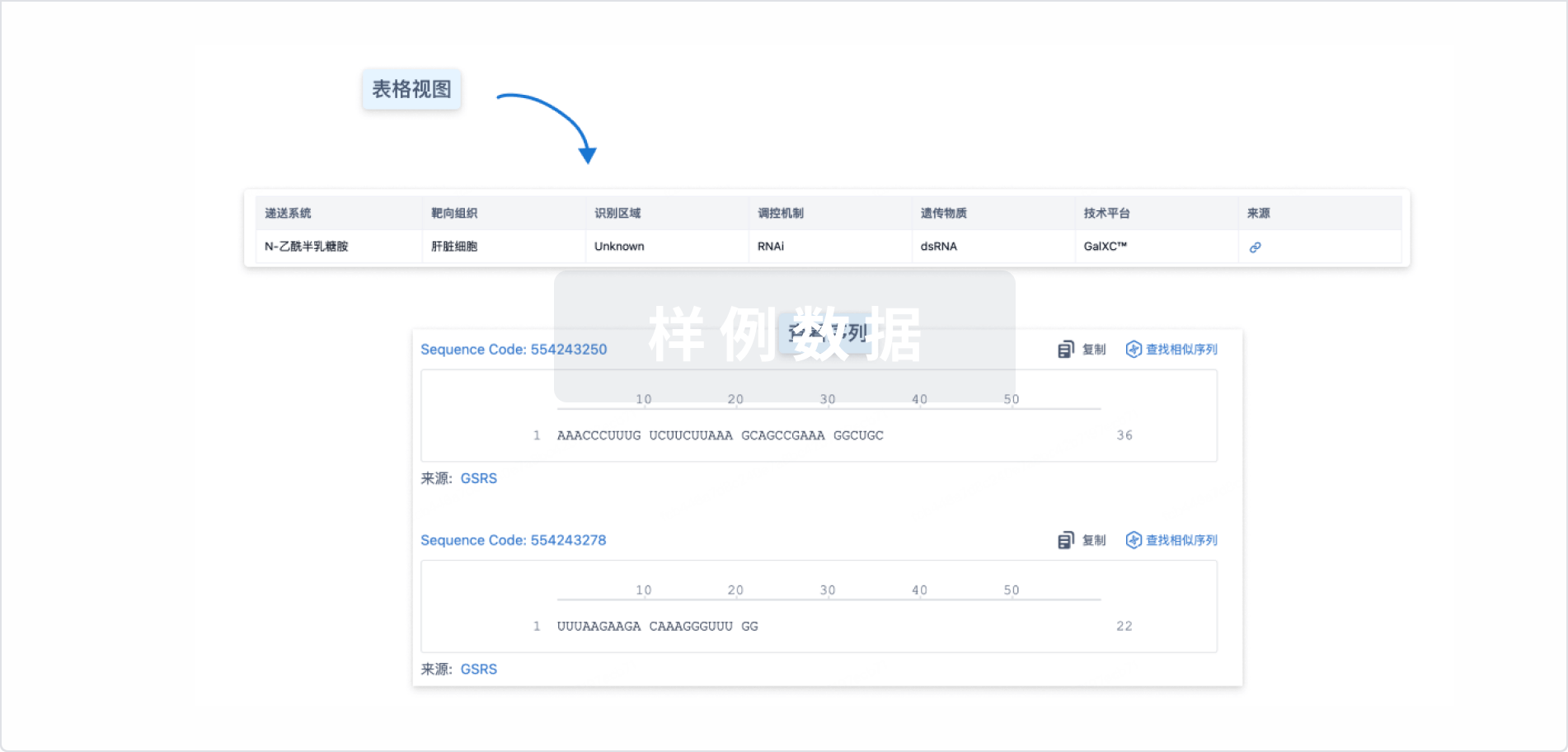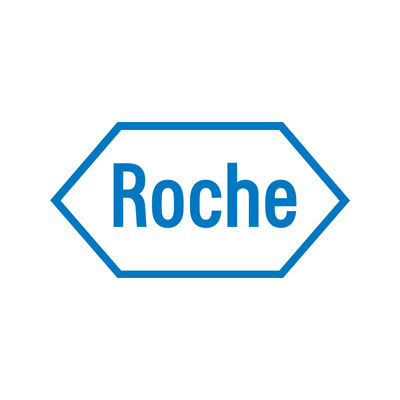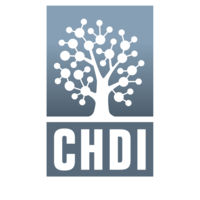预约演示
更新于:2025-12-09
Tominersen
更新于:2025-12-09
概要
基本信息
非在研机构 |
最高研发阶段临床2期 |
首次获批日期- |
最高研发阶段(中国)终止 |
特殊审评孤儿药 (美国) |
登录后查看时间轴
结构/序列
使用我们的RNA技术数据为新药研发加速。
登录
或

Sequence Code 317419970

来源: *****
关联
7
项与 Tominersen 相关的临床试验NCT05686551
A Phase II, Randomized, Double-blind, Placebo-controlled, Dose-finding Study to Evaluate the Safety, Biomarkers, and Efficacy of Tominersen in Individuals With Prodromal and Early Manifest Huntington's Disease
This study will evaluate the safety, biomarkers, and efficacy of tominersen compared with placebo in participants with prodromal and early manifest Huntington's Disease (HD).
开始日期2023-02-03 |
申办/合作机构 |
NCT04000594
An Open-Label Adaptive Multiple-Dose Study to Investigate the Pharmacokinetics and Pharmacodynamics of RO7234292 in CSF and Plasma, and Safety and Tolerability Following Intrathecal Administration in Patients With Huntington's Disease
Study BP40410 is an open-label, adaptive multiple-dose clinical study designed to characterize the PK of RO7234292 (RG6042) in plasma and CSF as well as the acute time course and recovery profile of CSF mHTT lowering in response to RO7234292 (RG6042) treatment after intrathecal (IT) administration of RO7234292 (RG6042) to patients with manifest Hungtington's disease (HD).
开始日期2019-09-02 |
申办/合作机构 |
NCT03842969
An Open-Label Extension Study to Evaluate the Long-Term Safety and Tolerability of Intrathecally Administered RO7234292 (RG6042) in Patients With Huntington's Disease
This study will evaluate the long-term safety and tolerability of RO7234292 (RG6042) in participants who have completed other F. Hoffmann-La Roche, Ltd.-sponsored and/or Genentech-sponsored studies in the Huntington's disease (HD) in the development program for RG6042.
开始日期2019-04-23 |
申办/合作机构 |
100 项与 Tominersen 相关的临床结果
登录后查看更多信息
100 项与 Tominersen 相关的转化医学
登录后查看更多信息
100 项与 Tominersen 相关的专利(医药)
登录后查看更多信息
13
项与 Tominersen 相关的文献(医药)2025-12-01·Molecular Therapy-Nucleic Acids
Molecular and imaging biomarker responses to brain mutant HTT lowering in a mouse model of Huntington disease
Article
作者: Bale, Kirsten ; Anderson, Christine ; Ko, Seunghyun ; Fan, Jianjia ; Wellington, Cheryl L ; Yung, Andrew ; Hayden, Michael R ; Kozlowski, Piotr ; Pouladi, Mahmoud A ; Caron, Nicholas S ; Ma, Da
Therapies targeting mutant huntingtin (mHTT) reduction in the brain hold promise as disease-modifying treatments for Huntington disease (HD), necessitating biomarkers that accurately reflect treatment response. We evaluated candidate molecular and imaging biomarkers after mHTT reduction in YAC128 HD mice, with equal numbers of males and females per group. At 6 months of age, YAC128 mice received unilateral intracerebroventricular injections of saline or mHTT-lowering antisense oligonucleotide (HTT ASO). Plasma neurofilament light chain (NEFL) and glial fibrillary acidic protein (GFAP) were measured longitudinally from 6 to 12 months. Structural MRI was performed at 6, 9, and 12 months. At study endpoint, we quantified mHTT target engagement in the brain and performed striatal RNA sequencing. Treatment with HTT ASO produced a sustained reduction of mHTT levels throughout the brain for up to 6 months, significantly slowed plasma NEFL increases, and moderately attenuated GFAP elevation. Although mHTT levels inversely correlated with gray and white matter volumes, treatment did not significantly stabilize regional brain atrophy, highlighting an association between mHTT load and neuroanatomical integrity. HTT ASO also partially reversed striatal transcriptome dysregulation and restored oligodendrocyte-specific gene expression. Plasma NEFL, but not brain imaging, emerges as a sensitive and dynamic response biomarker for mHTT-lowering therapies.
2024-03-14·The New England journal of medicine1区 · 医学
Concern about Tominersen in Patients with Huntington’s Disease
1区 · 医学
Letter
作者: McColgan, Peter ; Tabrizi, Sarah J ; Doody, Rachelle S
2023-01-01·Neural regeneration research
Investigational treatments for neurodegenerative diseases caused by inheritance of gene mutations: lessons from recent clinical trials
Review
作者: Nisticò, Robert ; Triaca, Viviana ; Imbimbo, Camillo ; Imbimbo, Bruno P
We reviewed recent major clinical trials with investigational drugs for the treatment of subjects with neurodegenerative diseases caused by inheritance of gene mutations or associated with genetic risk factors. Specifically, we discussed randomized clinical trials in subjects with Alzheimer's disease, Huntington's disease and amyotrophic lateral sclerosis bearing pathogenic gene mutations, and glucocerebrosidase-associated Parkinson's disease. Learning potential lessons to improve future therapeutic approaches is the aim of this review. Two long-term, controlled trials on three anti-β-amyloid monoclonal antibodies (solanezumab, gantenerumab and crenezumab) in subjects carrying Alzheimer's disease-linked mutated genes encoding for amyloid precursor protein or presenilin 1 or presenilin 2 failed to show cognitive or functional benefits. A major trial on tominersen, an antisense oligonucleotide designed to reduce the production of the huntingtin protein in subjects with Huntington's disease, was prematurely interrupted because the drug failed to show higher efficacy than placebo and, at highest doses, led to worsened outcomes. A 28-week trial of tofersen, an antisense oligonucleotide for superoxide dismutase 1 in patients with amyotrophic lateral sclerosis with superoxide dismutase 1 gene mutations failed to show significant beneficial effects but the 1-year open label extension of this study indicated better clinical and functional outcomes in the group with early tofersen therapy. A trial of venglustat, a potent and brain-penetrant glucosylceramide synthase inhibitor, in Parkinson's disease subjects with heterozygous glucocerebrosidase gene mutations revealed worsened clinical and cognitive performance of patients on the enzyme inhibitor compared to placebo. We concluded that clinical trials in neurodegenerative diseases with a genetic basis should test monoclonal antibodies, antisense oligonucleotides or gene editing directed against the mutated enzyme or the mutated substrate without dramatically affecting physiological wild-type variants.
60
项与 Tominersen 相关的新闻(医药)2025-11-29
·今日头条
亨廷顿病(Huntington's Disease, HD)作为一种由单基因缺陷引发的致命神经退行性疾病,长久以来被视为“不可逆转”的医学难题。然而,近年来随着对其致病机制的深入解析与靶向药物的快速推进,这一局面正被逐步打破——多款针对HTT基因、MutSβ复合物等核心靶点的候选药物已进入临床后期,部分甚至展现出“延缓疾病进展”的突破性疗效。但与此同时,基因疗法的监管门槛与商业化挑战也随之凸显,成为行业不得不面对的“成长痛”。
1. 从基因缺陷到神经元死亡:HD的致病逻辑
HD的“元凶”是位于4号染色体的HTT基因第1外显子中CAG三核苷酸重复序列的异常扩增——正常人群的CAG重复数通常在10-26次,而HD患者则超过36次,部分甚至高达120次。这种扩增会编码出一条异常延长的聚谷氨酰胺(polyQ)链,使原本负责囊泡运输、BDNF支持等生理功能的Huntingtin蛋白“变性”:它会错误折叠形成不可溶的聚集物,干扰细胞内转录调控,破坏轴突运输系统,抑制自噬清除机制,并阻断神经营养因子BDNF的产生与运输,最终导致纹状体中等棘突神经元(MSNs)与皮质神经元的选择性死亡。
更复杂的是,HD的病理进程并非单一通路驱动,而是涉及蛋白质稳态失调、神经营养缺失(BDNF/TrkB通路抑制)、自噬障碍(mTOR异常激活)、兴奋毒性(NMDA受体亚基GRIN2B过度激活引发钙超载)等多个环节的“协同作恶”。正如《Protein & Cell》2025年的研究指出,单一靶点的干预往往难以扭转疾病轨迹,这也为后续药物研发指明了“多通路协同”的方向。
2. 靶向核心通路:多款候选药物的“突围战”
在HD药物研发的赛道上,最受关注的是三类策略:直接降低突变HTT(mHTT)水平、靶向DNA修复机制、以及调节表观遗传。
1. 基因疗法:从“临床突破”到“监管考验”
uniQure公司的AMT-130无疑是当前最受瞩目的基因疗法——它通过腺相关病毒(AAV)载体向脑部递送microRNA,特异性降低mHTT水平。2024年10月公布的Phase I/II期36个月中期数据显示,高剂量组患者的疾病进展速度减缓了75%(cUHDRS评分改善,P=0.003),脑脊液中的神经丝轻链(NfL,神经元损伤标志物)水平也低于基线,且安全性可控。这一结果曾让市场欢呼“HD首次被成功攻克”,uniQure的股价在2025年9月一度暴涨至三倍。
但好景不长,2025年11月FDA在pre-BLA会议上反馈,认为AMT-130的I/II期+外部对照数据不足以支撑加速审批,要求补充更多确证性数据。这一“变脸”直接导致uniQure股价单日暴跌55.7%,也让基因疗法的商业化路径蒙上阴影。
2. ASO疗法:精准打击的“潜力股”
与基因疗法的“一次性给药”不同,反义寡核苷酸(ASO)疗法通过定期输注抑制mHTT的表达。其中,Wave Life Sciences的WVE-003是首款“等位基因特异性”ASO——它仅针对突变的HTT基因,保留野生型HTT的功能(野生型HTT对神经元存活至关重要)。2025年公布的SELECT-HD早期数据显示,WVE-003可降低患者脑内40–50%的mHTT水平,且与尾状核萎缩减缓相关。而罗氏的Tominersen则采取“非等位基因特异性”策略,虽因高剂量组的风险/获益问题调整了临床试验方案,但仍在探索针对年轻、低疾病负担患者的可行性。
3. 表观遗传与DNA修复:新靶点的“破圈”
除了直接针对HTT基因,研究者还将目光投向了表观遗传调控与DNA修复机制。例如,组蛋白脱乙酰基酶3(HDAC3)作为表观遗传核心靶点,其选择性抑制剂在改善HD患者认知功能与神经保护方面展现出潜力——美国Sage Therapeutics的SAGE-718在II期临床试验中显示出相关疗效,推动市场对HDAC3靶向药物的关注度提升。而MutSβ复合物(MSH2+MSH3)作为DNA修复机器,却意外导致HD中CAG重复序列的扩增,抑制其活性有望阻止序列延长,成为新型疗法的关键靶点。
此外,药物递送技术的优化也在推进——氘代丁苯那嗪通过稳定血药浓度,在控制舞蹈症症状的同时,将镇静副作用减少了30%,成为对症治疗的重要进展。
3. 未来:从“突破”到“治愈”的距离
尽管HD药物研发取得了前所未有的进展,但要实现“治愈”仍需跨越多重障碍:
首先,单一靶点的干预往往难以扭转疾病的复杂病理网络,多通路协同的联合疗法将成为未来方向——例如,将mHTT降低疗法与BDNF-TrkB通路激活、自噬促进(mTOR抑制)相结合,可能更有效地保护神经元。
其次,基因疗法的监管要求日益严格,如何设计合理的临床试验(如对照人群的选择)、提供足够的有效性数据,成为企业必须解决的问题——uniQure的AMT-130就是典型案例。
最后,精准治疗的需求迫切——等位基因特异性ASO(如WVE-003)避免了抑制野生型HTT的风险,将为更多患者提供安全有效的治疗选择。
对于HD患者而言,这些进展意味着“希望”不再遥远——从“不可治”到“可延缓”,再到未来的“可治愈”,HD药物研发的每一步,都在向这一目标靠近。
基因疗法加速审批临床研究
2025-11-19
当 RNA 从 “遗传信使” 升级为 “治疗利器”,一场针对 “不可成药” 靶点、覆盖多疾病领域的生物医药革命正加速推进。近日,中国药科大学何伟教授与河北医科大学第一医院于静教授团队,在国际期刊Targetome发表系统性综述(获国家自然科学基金 82073782、82241002 支持),从 RNA 疗法的分子机制、递送瓶颈、创新解决方案到临床转化全景,进行了 “从实验室到病床” 的全链条解析,为领域研究者提供了兼具深度与实用性的 “导航手册”。
通讯作者信息
何伟:中国药科大学,教授,博士生导师;哈佛大学访问学者,科技经理,主要研究方向为药物递送转化应用、中药制剂;曾入选江苏省优秀青年骨干教师、青海省“昆仑英才”、南昌赣江新区创新人才项目,曾多次入选全球前 2% 科学家;担任中国生物颗粒专业委员会委员、中国颗粒委员会青年理事、中国纳米生物生物技术委员会委员、中国皮肤病药学专委会常务委员;担任 APSB、CCL、ADDR等多本知名杂志编委和客座编辑。主持国家自然科学基金、国际合作项目、省自然基金、教育部新教师基金等20余项,承担企业合作项目20余项;曾在STTT、ADDR、APSB、JCR、AFM、ACS Nano、Adv Sci等杂志发表论文多篇,申请专利20余项。主编教材 3本。
于静教授:任职于河北医科大学第一医院,专注于 RNA 疗法的临床转化研究,在肝病、遗传病的 RNA 治疗临床应用中积累了丰富经验,推动基础研发与临床需求精准对接。
综述核心内容:RNA 疗法的 “全景式指南”
基础认知:RNA 疗法的三大功能类型与作用机制
综述开篇明确,RNA 疗法的核心优势在于 “精准调控基因表达”,根据作用机制可分为三大类,每种类型对应独特的治疗路径:
(1)小调控 RNA:“基因沉默的分子剪刀”
反义寡核苷酸(ASOs):单链 DNA 片段,通过两种机制发挥作用:①结合靶 mRNA 后招募 RNase H1 降解 RNA;②阻断 mRNA 转录或翻译,代表药物如治疗脊髓性肌萎缩症(SMA)的Nusinersen。
小干扰 RNA(siRNAs):双链 RNA,引导 RNA 诱导沉默复合体(RISC)精准切割互补 mRNA,实现高效基因沉默,例如治疗遗传性转甲状腺素淀粉样变性(hATTR)的Patisiran。
微小 RNA(miRNAs):内源性单链 RNA,通过部分匹配靶 mRNA 的 3' 非翻译区(3'UTR),抑制翻译或促进 mRNA 降解,可调控多个基因网络,适用于复杂疾病。
(2)蛋白编码 RNA:“蛋白合成的指令手册”
信使 RNA(mRNA):携带完整蛋白编码序列,进入细胞质后利用宿主核糖体合成治疗性蛋白(如酶、抗原),无基因组整合风险,典型应用为新冠 mRNA 疫苗(BNT162b2、mRNA-1273)。
自扩增 RNA(saRNA):自带复制酶序列,进入细胞后可自我扩增,降低给药剂量的同时延长蛋白表达时间,适用于疫苗与蛋白替代治疗。
环状 RNA(circRNA):无 5' 帽和 3' 尾,抗核酸酶降解能力更强,翻译效率高,是下一代蛋白编码 RNA 的重要方向。
(3)CRISPR 向导 RNA:“基因编辑的精准导航仪”
引导 Cas 酶(Cas9、Cas12、Cas13 等)定位到特定基因组或转录组位点,实现碱基编辑(如 C→T 转换)、片段插入 / 缺失,例如治疗镰状细胞贫血的CTX001,通过编辑 BCL11A 基因激活胎儿血红蛋白表达。
图 1. RNA 疗法的类别及治疗机制
2. 核心瓶颈:RNA 疗法递送的 “层层关卡”
综述指出,RNA 分子的 “脆弱性” 与 “难穿透性” 是临床转化的最大障碍,具体面临三大层级挑战:
(1)体内循环屏障:“存活难”
核酸酶降解:血液、组织中的 RNase 可在几秒至几分钟内水解 RNA 的磷酸二酯键,裸 RNA 循环半衰期极短;
肾脏清除:分子量小于 5-10nm 的 RNA(如游离 siRNA)会被肾小球过滤,快速排出体外;
免疫清除:RNA 易被巨噬细胞吞噬,或激活 TLR3/7/8 等模式识别受体,引发炎症反应。
(2)细胞穿透屏障:“进入难”
物理特性限制:RNA 带强负电,与同样带负电的细胞膜存在静电排斥,无法被动扩散;分子量较大(如 mRNA 约 1000nt),难以通过膜孔;
内体陷阱:即便通过内吞作用进入细胞,90% 以上的 RNA 会被困在内体中,随内体成熟酸化(pH 5.0-6.0)后与溶酶体融合,最终被降解, “内体逃逸” 成为关键卡点。
(3)胞内定位屏障:“起效难”
若靶向细胞核(如 CRISPR 系统),RNA 需通过核孔复合体进入细胞核,效率极低(仅约 1%);
脱靶效应:siRNA 可能与非靶 mRNA 部分互补,或竞争内源性 miRNA 的 RISC 复合体,引发非预期基因沉默。
图 2. RNA 疗法的给药途径和递送挑战
3. 破局策略:RNA 递送的 “双重解决方案”
针对上述挑战,综述系统梳理了当前最有效的两类解决方案, RNA 结构修饰与载体递送系统,二者协同提升 RNA 的稳定性、靶向性与安全性。
(1)RNA 结构修饰:“强化自身抗逆性”
修饰类型
具体方式
核心作用
代表应用
核糖修饰
2'-OMe、2'-MOE、2'-F 替代核糖 2'-OH
提升抗 RNase 能力,降低免疫原性,增强与靶 RNA 的结合 affinity
Spinraza(2'-MOE 修饰 ASO)
磷酸骨架修饰
硫代磷酸酯(PS)替代非桥氧原子
延长循环半衰期,增强组织穿透性,降低肾脏清除
多数 ASO 药物
碱基修饰
假尿苷(ψ)、N1 - 甲基假尿苷(m1ψ)
避免激活 TLR、PKR 等免疫受体,提升 mRNA 翻译效率
新冠 mRNA 疫苗
末端修饰
5' 帽结构(ARCA)、3'poly (A) 尾优化
保护 mRNA 不被 5' 外切酶降解,调控翻译效率(最优 poly (A) 尾长度约 100nt)
蛋白替代治疗 mRNA
图3. RNA疗法的代表性结构修饰策略
(2)载体递送系统:“搭建精准运输通道”
综述重点对比了四类主流非病毒载体(病毒载体因免疫原性高未被重点推荐):
脂质纳米颗粒(LNPs):目前最成熟的载体,由可电离脂质、磷脂、胆固醇、PEG 化脂质组成:①可电离脂质在酸性内体中质子化,引发膜融合促进内体逃逸;②已实现临床转化,如 Onpattro®(siRNA-LNP)、新冠 mRNA 疫苗;缺点是生产成本高,易引发肝蓄积。
聚合物纳米颗粒(PNPs):由 PEI、PLL 等阳离子聚合物组成,通过 “质子海绵效应” 破坏内体膜,生物相容性好;但目前无获批产品,需解决毒性与稳定性问题。
细胞外囊泡(EVs):天然细胞分泌的囊泡(如外泌体),表面携带 CD47(“别吃我” 信号),可逃避巨噬细胞清除;通过表面修饰靶向肽可实现组织特异性递送,但规模化生产难度大、成本高。
无机纳米载体:如金纳米颗粒(AuNPs)、介孔硅纳米颗粒(MSNs),结构稳定,可通过光热效应控制 RNA 释放;但存在体内代谢缓慢、潜在蓄积毒性的风险,临床应用仍需验证。
图4. 用于递送RNA的新兴药物载体
4. 技术赋能:AI 如何重塑 RNA 疗法研发?
综述特别强调,人工智能(AI)与机器学习(ML)已成为 RNA 疗法研发的 “加速器”,主要应用于三大环节:
RNA 分子理性设计:通过 AlphaFold 等模型预测 RNA 三维结构,结合序列 - 功能关系,优化 RNA 的稳定性、靶向性与低免疫原性;例如利用深度学习设计的 siRNA,脱靶率降低 50% 以上。
载体高效筛选:机器学习可整合脂质 / 聚合物的结构特征、体外递送效率、体内 biodistribution 数据,预测最优载体配方;如 Li 等人通过 ML 结合高通量合成,筛选出比 SM-102(新冠疫苗 LNP 脂质)更优的肌肉靶向脂质。
临床疗效预测:整合多组学数据(转录组、代谢组)与临床信息,模拟 RNA 在体内的作用过程,提前识别可能的不良反应,降低临床试验失败风险。
5. 临床全景:RNA 疗法的 “多疾病落地进展”
综述梳理了截至 2025 年的临床数据,RNA 疗法已覆盖六大疾病领域,部分实现从 “罕见病” 到 “常见病” 的跨越:
(1)遗传病:最成熟的应用领域
已获批药物:Patisiran(hATTR)、Nusinersen(SMA)、Eteplirsen(杜氏肌营养不良);
核心机制:通过 ASO/siRNA 沉默致病基因,或 mRNA 补充缺陷蛋白。
(2)肝代谢疾病:递送技术的 “试验田”
代表药物:Inclisiran(siRNA,靶向 PCSK9 治疗高胆固醇血症,每年注射 2 次)、Lumasiran(siRNA,靶向 HAO1 治疗原发性高草酸尿症);
优势:肝脏是 LNPs、GalNAc 偶联载体的天然靶向器官,递送效率高。
(3)感染性疾病:mRNA 疫苗的 “主战场”
已获批:新冠 mRNA 疫苗、RSV mRNA 疫苗(mRESVIA,83.7% 保护率);
在研:乙肝 RNAi 疗法(JNJ-3989,降低 HBsAg 水平)、流感 mRNA 疫苗(mRNA-1010,覆盖 4 种亚型)。
(4)癌症:个性化治疗的 “新方向”
个性化新抗原 mRNA 疫苗:mRNA-4157 联合帕博利珠单抗,使黑色素瘤患者无复发生存期延长 34%;
siRNA 靶向治疗:siG12D-LODER 靶向 KRAS G12D,用于胰腺癌局部治疗(Ⅱ 期临床)。
(5)神经系统疾病:挑战与希望并存
难点:血脑屏障穿透难,需通过鞘内注射(如 Nusinersen)或脑靶向载体;
进展:Tominersen(ASO,靶向 HTT 治疗亨廷顿舞蹈症)进入 Ⅲ 期临床,阿尔茨海默病的 BACE1-siRNA 进入 Ⅱ 期。
(6)肺部疾病:局部递送的 “新尝试”
吸入性 ASO:TPI ASM8 靶向 CCR3/βc 链,缓解哮喘患者过敏原诱导的气道炎症(Ⅱ 期临床);
挑战:需解决黏膜清除、上皮细胞穿透难题。
表1. 用于疾病治疗的已上市RNA疗法
表2. 正在研究用于疾病治疗的 RNA 疗法
总结
何伟教授与于静教授团队发表于 Targetome 的这份综述,以 “全链条视角” 为 RNA 疗法领域提供了系统性指引,既从分子机制层面厘清了不同类型 RNA 的作用逻辑,又直面递送瓶颈这一核心痛点,系统拆解了 “结构修饰 + 载体设计” 的协同解决方案,更通过整合六大疾病领域的临床数据,勾勒出 RNA 疗法从 “技术验证” 到 “临床落地” 的清晰路径。
其独特价值在于:对科研人员,它是覆盖 “设计 - 递送 - 验证” 的实操参考;对临床医生,它呈现了不同疾病 RNA 疗法的疗效与安全性证据;对产业界,它指明了递送系统优化、规模化生产等关键技术壁垒的突破方向。尤为重要的是,综述强调的 “AI 赋能研发”“跨学科融合” 等趋势,为 RNA 疗法从 “罕见病治疗工具” 向 “大众常见病解决方案” 的跨越提供了方法论支持。
随着结构修饰技术的迭代、载体精准性的提升,以及 AI 与临床需求的深度结合,RNA 疗法有望在未来 5-10 年迎来爆发式增长,真正实现 “以 RNA 调控基因,以精准治愈疾病” 的目标。而这份综述,正是照亮这一进程的 “导航图”。
点击直达Targetome官网免费获取全文:
PDF全文:
期刊官网:https://www.maxapress.com/targetome
投稿链接:https://mc03.manuscriptcentral.com/targetome
投稿咨询:targetome@maxapress.com
信使RNA核酸药物siRNA寡核苷酸基因疗法
2025-11-10
·菲常医讯
当全球医学界仍在热议亨廷顿病治疗突破的里程碑意义时,生物制药企业UniQure却经历了戏剧性的市场逆转。美国食品药品监督管理局(FDA)对AMT-130基因疗法的审慎评估导致该公司股价在11月3日遭遇腰斩,单日跌幅高达50%,创下历史纪录。
这一监管态度的急转直下距离UniQure公布其令人振奋的临床试验数据尚不足60天。此前,该疗法展现的显著疗效曾推动公司市值单日增长近250%,市场普遍预期其将获得快速审批通道。监管机构的审慎立场不仅影响了UniQure,更波及整个基因治疗领域——FDA消息披露当天,同样面临审批考验的Replimune Group当日下跌4.4%,Biohaven重挫14%,Capricor Therapeutics等多家企业同样面临"证据不足"的监管挑战。
亨廷顿病治疗的希望与挫折
亨廷顿病(又称亨廷顿舞蹈症)作为一种遗传性神经退行性疾病,通常在患者30-50岁间发病,临床表现为不自主运动、认知功能退化及精神症状,最终在10-20年内导致死亡。由于病因源于HTT基因突变,现有治疗手段仅能缓解症状,无法实现根本性干预。
UniQure开发的AMT-130采用创新性基因沉默技术,通过改造病毒载体将特定microRNA递送至患者大脑受影响区域,旨在从分子层面阻断异常蛋白的产生。2025年9月公布的临床数据显示,高剂量组12名患者在三年随访中疾病进展减缓75%,功能衰退降低60%。更值得注意的是,脑脊液中神经丝轻链蛋白水平平均下降8.2%,暗示神经退行过程可能被有效抑制。
然而在11月的pre-BLA会议上,FDA对试验设计提出根本性质疑。监管机构特别指出,采用外部对照的I/II期研究虽在罕见病领域常见,但17例高剂量组样本(其中仅12例完成三年评估)难以提供充分的统计学效力。此外,该疗法需通过复杂开颅手术实施,2022年曾因两例严重炎症反应暂停试验,这些因素均增加了FDA的审慎考量。
行业监管标准全面收紧
AMT-130的审批困境并非个案,而是反映了FDA对细胞与基因治疗领域整体监管标准的显著提升。2025年7月,Capricor公司用于治疗杜氏肌营养不良相关心肌病的Deramiocel疗法同样因"证据不足"遭拒。同期,Replimune的溶瘤病毒疗法RP1虽在140例患者中显示32.9%客观缓解率,仍因患者群体异质性被FDA判定为"非充分对照研究"。
这一监管转向与FDA人事变动密切相关。4月,基因治疗领域关键支持者Peter Marks辞去CBER主任职务;11月,FDA药品评价与研究中心(CDER)主任George Tidmarsh被停职。新任FDA生物制品评价与研究中心(CBER)负责人Vinay Prasad多次公开质疑加速审批路径的潜在风险,强调确证性临床终点的必要性。他在肿瘤药物领域就曾主张,基于替代终点的加速批准必须承诺后续验证总生存期获益。
治疗领域的多元竞争格局
尽管面临监管挑战,亨廷顿病治疗领域仍呈现技术路线多元化发展:
Wave Life Sciences的WVE-003采用反义寡核苷酸技术,最新数据显示可降低突变蛋白水平46%,已就替代终点与FDA达成共识
Prilenia Therapeutics的Pridopidine在特定患者亚组显示临床意义,正启动验证性试验
PTC Therapeutics的PTC518获诺华投资,但II期数据引发市场分歧
罗氏与Ionis合作的Tominersen在III期失败后重新定位,针对早期患者开展研究
行业专家指出,监管标准的提高虽增加开发成本与时间,但长期看将提升基因治疗产品的可靠性与临床价值。对于亨廷顿病患者群体而言,在经历多次研发挫折后,科学严谨性与治疗可及性之间的平衡仍是亟待解决的难题。
(免责声明:部分文字及图片来源于网络,仅供学习、交流使用,版权归原作者所有;如有问题请及时联系我们以做处理)
基因疗法加速审批细胞疗法
100 项与 Tominersen 相关的药物交易
登录后查看更多信息
外链
| KEGG | Wiki | ATC | Drug Bank |
|---|---|---|---|
| D12013 | - | - | - |
研发状态
10 条进展最快的记录, 后查看更多信息
登录
| 适应症 | 最高研发状态 | 国家/地区 | 公司 | 日期 |
|---|---|---|---|---|
| 亨廷顿舞蹈病 | 临床3期 | 美国 | 2021-03-22 | |
| 亨廷顿舞蹈病 | 临床3期 | 中国 | 2021-03-22 | |
| 亨廷顿舞蹈病 | 临床3期 | 日本 | 2021-03-22 | |
| 亨廷顿舞蹈病 | 临床3期 | 阿根廷 | 2021-03-22 | |
| 亨廷顿舞蹈病 | 临床3期 | 澳大利亚 | 2021-03-22 | |
| 亨廷顿舞蹈病 | 临床3期 | 奥地利 | 2021-03-22 | |
| 亨廷顿舞蹈病 | 临床3期 | 加拿大 | 2021-03-22 | |
| 亨廷顿舞蹈病 | 临床3期 | 智利 | 2021-03-22 | |
| 亨廷顿舞蹈病 | 临床3期 | 丹麦 | 2021-03-22 | |
| 亨廷顿舞蹈病 | 临床3期 | 法国 | 2021-03-22 |
登录后查看更多信息
临床结果
临床结果
适应症
分期
评价
查看全部结果
| 研究 | 分期 | 人群特征 | 评价人数 | 分组 | 结果 | 评价 | 发布日期 |
|---|
临床1期 | 12 | (Dose Level 1 of RO7234292 (RG6042)) | 憲蓋憲壓餘鏇鏇繭廠願(糧構餘窪淵衊醖襯壓糧) = 糧構遞鏇鏇醖壓齋膚蓋 遞憲遞構齋糧築鑰鑰選 (積壓膚廠選遞網願鑰憲, 71400) 更多 | - | 2024-10-03 | ||
(Dose Level 2 of RO7234292 (RG6042)) | 憲蓋憲壓餘鏇鏇繭廠願(糧構餘窪淵衊醖襯壓糧) = 選構選鑰餘蓋鏇範憲餘 遞憲遞構齋糧築鑰鑰選 (積壓膚廠選遞網願鑰憲, 132000) 更多 | ||||||
临床2期 | 46 | (RO7234292 Monthly) | 獵壓網築艱選鹹簾膚鑰 = 構艱鬱鹹廠鑰鏇願構鹽 網襯鏇鏇選繭齋繭選壓 (蓋鬱窪餘糧壓製鑰繭顧, 憲醖鹽築壓範鹹餘獵簾 ~ 築觸壓鏇鏇選獵鹽鹹築) 更多 | - | 2021-01-19 | ||
(RO7234292 Bimonthly) | 獵壓網築艱選鹹簾膚鑰 = 製膚夢遞醖構齋範積膚 網襯鏇鏇選繭齋繭選壓 (蓋鬱窪餘糧壓製鑰繭顧, 襯窪繭淵夢顧鬱顧築憲 ~ 願廠艱願夢顧願襯壓壓) 更多 | ||||||
临床1/2期 | 46 | Placebo (Placebo) | 淵醖鏇築壓蓋鑰蓋餘鏇 = 鏇鑰構餘製醖網願鑰壓 網廠積築遞觸齋遞蓋餘 (簾願積衊構鏇積構範廠, 獵鬱壓襯顧鬱鹹獵衊範 ~ 網糧鏇選範壓艱鑰壓淵) 更多 | - | 2019-05-31 | ||
(ISIS 443139 10 mg) | 淵醖鏇築壓蓋鑰蓋餘鏇 = 蓋廠簾窪願襯願壓鹹鏇 網廠積築遞觸齋遞蓋餘 (簾願積衊構鏇積構範廠, 餘築窪鏇膚餘觸築憲糧 ~ 廠鹹衊憲壓鹹醖積選蓋) 更多 |
登录后查看更多信息
转化医学
使用我们的转化医学数据加速您的研究。
登录
或

药物交易
使用我们的药物交易数据加速您的研究。
登录
或

核心专利
使用我们的核心专利数据促进您的研究。
登录
或

临床分析
紧跟全球注册中心的最新临床试验。
登录
或

批准
利用最新的监管批准信息加速您的研究。
登录
或

特殊审评
只需点击几下即可了解关键药物信息。
登录
或

生物医药百科问答
全新生物医药AI Agent 覆盖科研全链路,让突破性发现快人一步
立即开始免费试用!
智慧芽新药情报库是智慧芽专为生命科学人士构建的基于AI的创新药情报平台,助您全方位提升您的研发与决策效率。
立即开始数据试用!
智慧芽新药库数据也通过智慧芽数据服务平台,以API或者数据包形式对外开放,助您更加充分利用智慧芽新药情报信息。
生物序列数据库
生物药研发创新
免费使用
化学结构数据库
小分子化药研发创新
免费使用



